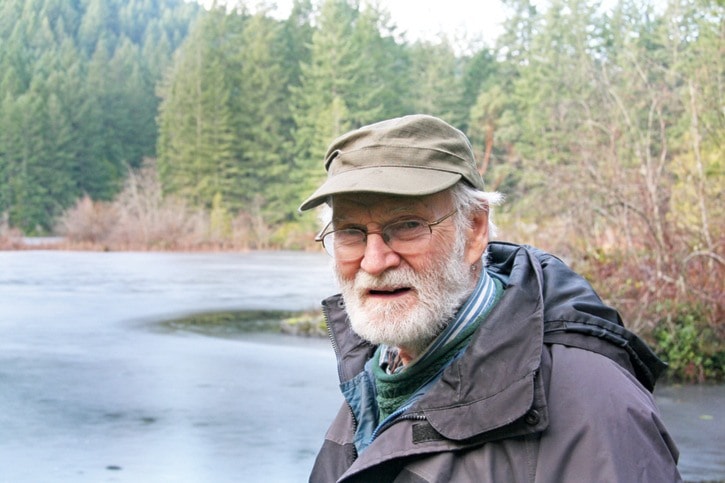Stewards eye commune style development on Highlands property
The Mary Lake Conservancy hasn’t fundraised enough to protect a 107-acre Highlands estate from development — but it still hopes to see park on 90 per cent of the property.
The society is considering partnering with a developer to build a 20-unit housing commune on 10 acres of the site. The venture could bring in enough revenue to secure the remaining 97 acres for a public park with hiking trails.
“We’d have liked to save the whole property, but donations aren’t coming in fast enough,” said Bob McMinn, Save Mary Lake campaign leader and Highland’s first mayor.
To buy the $4.4-million property, the society initially tried to raise $1 million towards a mortgage through an innovative social media campaign selling virtual 10-metre squares of the property for $10 to $100.
In the past four months, only $250,000 was raised, including $100,000 McMinn put forward to kick off the fundraiser.
McMinn estimates the 10 acres could be sold to a developer for $3 million, but first it needs to be rezoned. “We’re asking the owners for another few months to try this,” McMinn said.
The estate executors, which include a lawyer, accountant and two daughters of the deceased owners Peter and Violet Brotherston have been patient and willing to negotiate, McMinn said.
“The family is very interested in having this land preserved, but as you can understand they also want a fair price for it.”
Campaign outreach director Koi Neah said there’s already interest from 40 potential buyers who would like to live on the Mary Lake property. “Some of them already have their cheques written, they’re very excited about this,” Neah said.
The housing development would follow a co-housing model with small self-contained units centered around larger common buildings with workshops, children’s play areas and kitchen facilities for shared meals.
“Because so much is shared, it’s a more eco-friendly way of living,” said Neah, noting that similar developments that exist across Canada have found energy and water use of four units in co-housing is equivalent to one average home.
“If we need to see development, we’ll do everything way can to make sure it’s development with the smallest ecological footprint,” Neah said. “We want to find like-minded buyers who want to be stewards of the land and care for Mary Lake.”
To find out more about buying a co-housing unit, e-mail savemarylake@gmail.com or call 250-474-4324.
The online Save Mary Lake campaign continues at www.savemarylake.com.
news@goldstreamgazette.com
